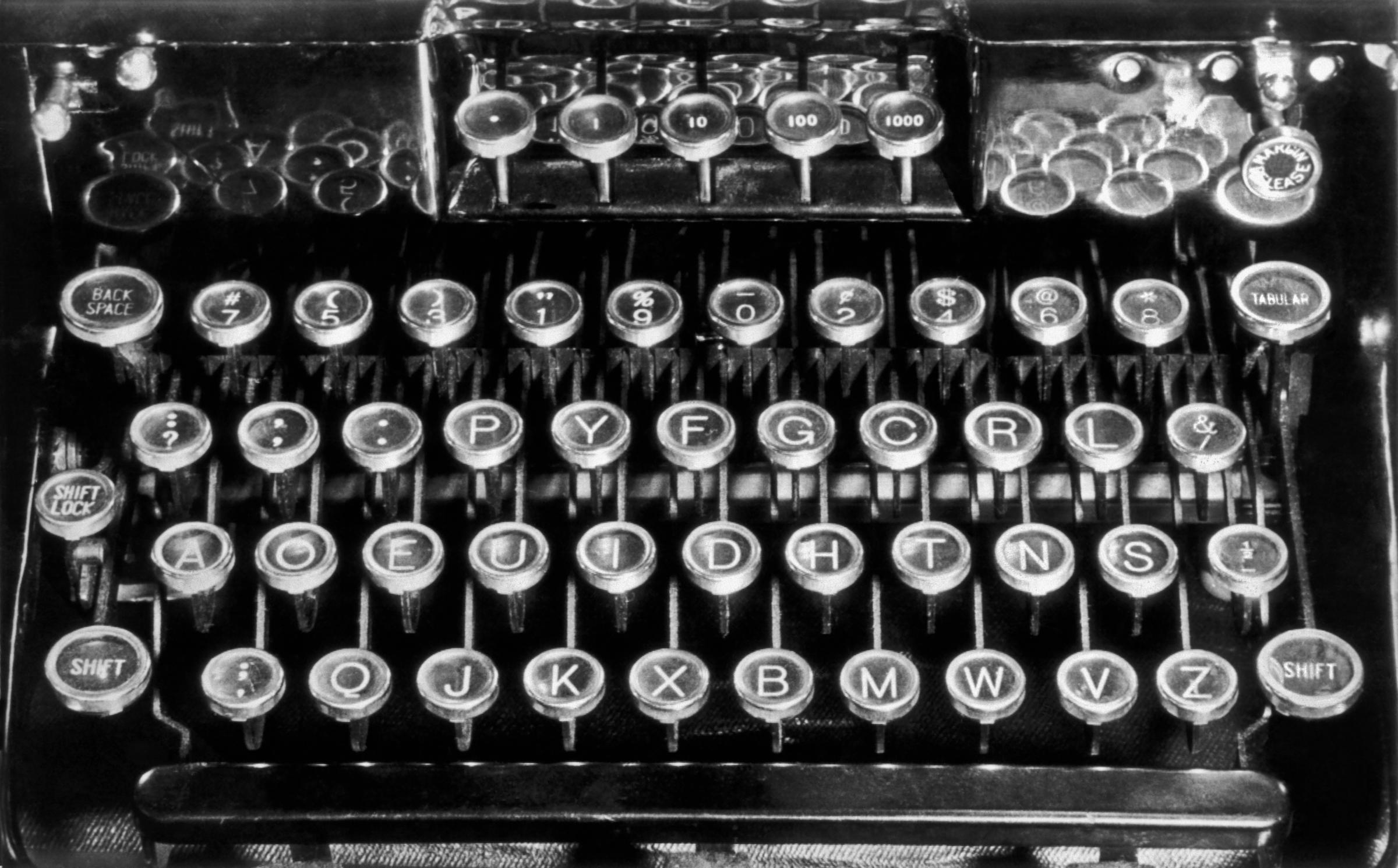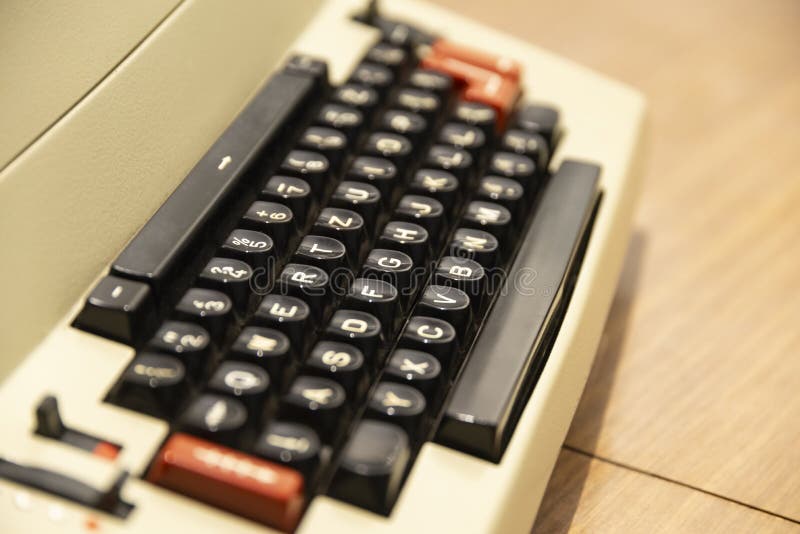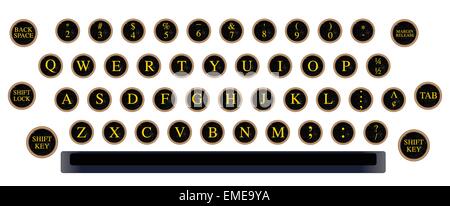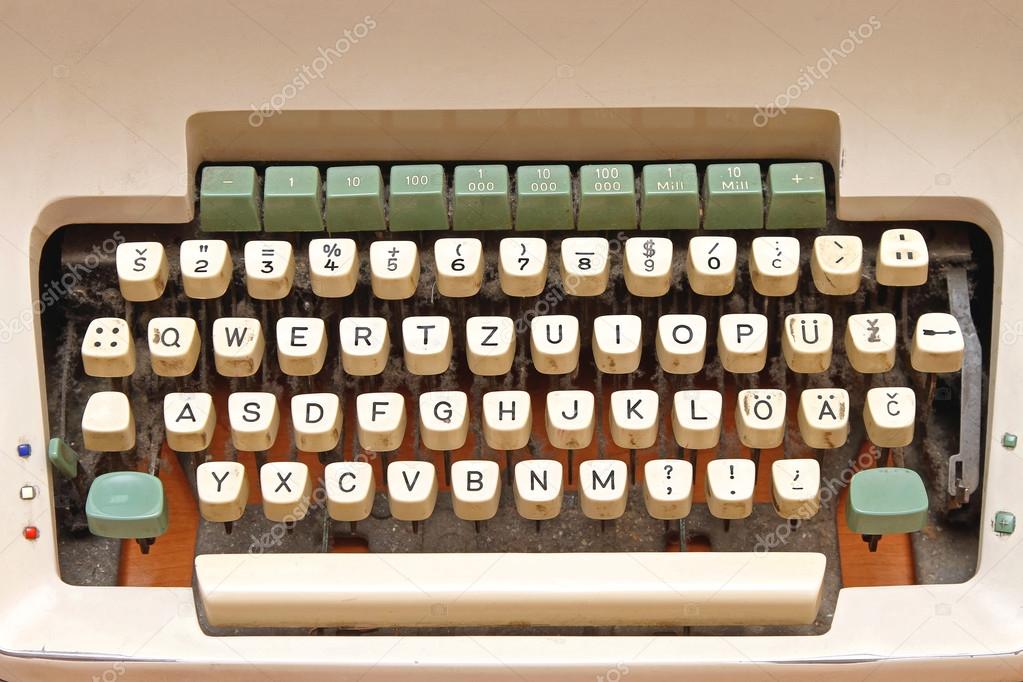

However, that doesn’t mean that it hasn’t changed at all.


This QWERTY keyboard has remained largely unchanged ever since it was introduced in typewriters in the mid-1800s.
OLD TYPEWRITER KEYBOARD LAYOUT ISO
However, the greatest innovation in this specific model is certainly the inclusion of what is essentially the modern backspace key.Īs we discussed in our post on Standardization of Keyboard Layouts, the current keyboard standard is the QWERTY layout, which varies between the ANSI (from INCITS 154-1988 – Office Machines and Supplies – Alphanumeric Machines – Keyboard Arrangement) and ISO (from ISO/IEC 9995-2:2009 – Information technology – Keyboard layouts for text and office systems – Part 2: Alphanumeric section) keyboards. It demonstrates a typewriter that made use of a rotating “typeball” to strike keys, as opposed to the traditional “basket” that would swing up to strike the ribbon. Bringing marketing expertise to bear, the new Remington Standard Typewriter Company was able to bring the typewriter to commercial success.This early advertisement for the IBM Correcting Selectric II typewriter appeared on televisions in 1973. Not only did it remedy some of the defects of the Sholes and Glidden machine, the launch allowed Remington to sell the typewriter business to three former employees. The updated Remington 2 typewriter, introduced in 1878, changed this. The first Remington typewriter sold poorly (it could only type in upper-case letters, was expensive at $125 per unit, and often broke). The 0 was added fairly early on, but some keyboards well into the 1970s were still missing a 1. 1 and 0 were left out to help shave down production costs, on the basis that these numerals could be produced using other keys, such as a capital I and a capital O. Its keyboard layout was almost the same QWERTY keyboard layout we use today, with a few minor differences. Remington made several adjustments, and launched the Sholes and Glidden typewriter on July 1, 1874. When he sold the design to Remington in 1873, the QWERTY layout looked like this: He went through several design iterations, attempting to bring the typewriter to market.

Sholes' solution was separating commonly used letter pairings, such as "ST," to avoid these jams, effectively allowing the typist to type faster, rather than slower. The keys were mounted on metal arms, which would jam if the keys were pressed in too rapid succession. However, the original key layout, with the second half of the alphabet in order on the top row and the first half in order on the bottom row, led to some problems. Sholes had been for some years developing the typewriter, filing a patent application in October 1867. The QWERTY layout is attributed to an American inventor named Christopher Latham Sholes, and it made its debut in its earliest form on J- 142 years ago today. In fact, the layout was designed to help people type faster. There's an old legend about the QWERTY keyboard, dating back to at least 1977: It "probably would have been chosen if the objective was to find the least efficient.character arrangement."


 0 kommentar(er)
0 kommentar(er)
